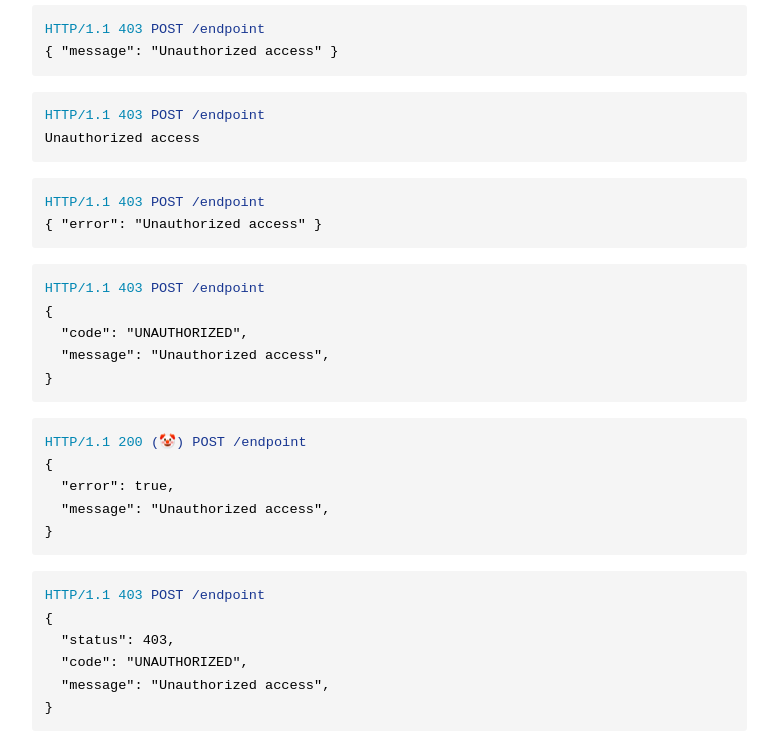this post was submitted on 30 Aug 2024
125 points (99.2% liked)
Programming
17807 readers
332 users here now
Welcome to the main community in programming.dev! Feel free to post anything relating to programming here!
Cross posting is strongly encouraged in the instance. If you feel your post or another person's post makes sense in another community cross post into it.
Hope you enjoy the instance!
Rules
Rules
- Follow the programming.dev instance rules
- Keep content related to programming in some way
- If you're posting long videos try to add in some form of tldr for those who don't want to watch videos
Wormhole
Follow the wormhole through a path of communities [email protected]
founded 2 years ago
MODERATORS
you are viewing a single comment's thread
view the rest of the comments
view the rest of the comments


#4 for me.
Proper HTTP Status code for semantic identification. Duplicating that in the response body would be silly.
User-friendly "message" value for the lazy, who just wanna toss that up to the user. Also, ideally, this would be what a dev looks at in logs for troubelshooting.
Tightly-controlled unqiue identifier "code" for the error, allowing consumers to build their own contextual error handling or reporting on top of this system. Also, allows for more-detailed types of errors to be identified and given specific handling and recovery logic, beyond just the status code. Like, sure, there's probably not gonna be multiple sub-types of 403 error, but there may be a bunch of different useful sub-types for a 400 on a form submission.